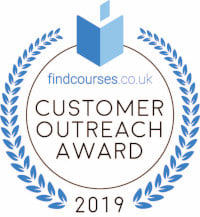Course description

This Oracle Application Express 21 (APEX) course introduces the delegate to Oracle's Application Express version 21 software. It is designed to give delegates practical experience in using Application Express version 21, also known as Apex, for building web-based applications for an Oracle database.
In version 21 there are a variety of enhancements to the developer environment including the code editor and a cleaner looking page designer interface. There is a new Theme Style, a Map Region type, some new or improved Item Types and other miscellaneous changes.
Exercises and examples are used throughout the course to give practical hands-on experience with the techniques covered.
Who will the Course Benefit?The Oracle Application Express 21 (APEX) course is aimed at Application developers, software developers, Web developers, Oracle Forms and Reports developers and technical support professionals who wish to develop interactive applications on the Web for end users.
Course ObjectivesBy the end of the course delegates will be able to use the Oracle Application Express development environment for functional application development for the Web. They will gain practical experience in building and deploying applications for the Web, in using Application Express to manage database objects and in administering the Oracle Application Express environment.
Upcoming start dates
Suitability - Who should attend?
A working knowledge of Oracle SQL and a basic knowledge of Oracle PL/SQL is required. Some knowledge of HTML would be beneficial but is not essential.
Experience to the level as demonstrated in these courses is recommended:
- Oracle SQL
- Oracle PL/SQL
Training Course Content
Oracle Application Express 21 (APEX) Training Course
Course Contents - DAY 1
Course Introduction- Administration and Course Materials
- Course Structure and Agenda
- Delegate and Trainer Introductions
- APEX Concepts
- APEX Main Components
- Workspaces, Database Applications
- Creating a Workspace
- The Workspace Administrator
- Upgrading APEX
- Logging into APEX
- Running an Application
- New features in APEX 21
- Use APEX to Browse, Create and Modify Objects
- Process Ad Hoc SQL Statements
- Manage Scripts in APEX
- Create, Run and Save SQL Queries
- Application Components
- Create an Application
- Create an Application from a file
- Creating Interactive Grids
- Create Reports Using Wizards
- Edit Report Attributes in Page Designer
- Add Links to Reports
- Create a Link to a Printer-Friendly version of a Report
- Create Faceted Search, Cards and Column Toggle reports
- Save and Print Reports in Different Formats
- Uploading Images
- Creating Cascading Stylesheet Files
- Uploading Static Files
- Adding an Image as an Application Logo
- Adding a Reference to a Javascript File
- View Page Attributes in Page Designer
- Edit Page Attributes in Page Designer
- Create a Global Page
- Create a New Region
- View Region Attributes
- Add Comments
- Add a Title
- Add a logo
Course Contents - DAY 2
Session 7: CREATE FORMS- Web Form Behaviour in APEX
- Create a Form Based on a Table
- Create a Form Based on a Procedure
- Create a Form with a Report
- Create an Editable Interactive Grid
- Format a Form
- Locking in APEX Forms
- Overview of Application Express Shared Components
- Dynamic and Static Lists of Values
- Create a Dynamic List of Values, query or table-based
- Create a Static List of Values
- Create a list of values using ranges
- Use a List of Values to Control Data in a Report
- Create a Cascading List of Values
- Understand the Different Types of Items
- Create Page Items
- Create Application Items
- Understand and Edit Item Attributes in Page Designer
- Use Javascript with Item
- Create and Edit Buttons
- Page Rendering and Page Processing
- Create Computations
- Validate Input Data
- Process Data
- Understand Application Branching
- Create Conditional Branches
- Overview of Application Express Navigation Components
- Manage the Navigation Menu
- Create Navigation Bar Entries
- Manage Breadcrumbs
- Create and Use Lists and List Items
- Creating and using Shortcuts
Course Contents - DAY 3
Session 12: DISPLAY DYNAMIC CONTENT- Create Hierarchical Trees
- Creating and editing Charts
- Creating and editing Calendars
- Understand Session State
- Set a Session State Value
- Clear the Session State
- Review the Session State
- Review the Messages in Debug Mode
- Enabling Feedback
- Managing Feedback and Team Development
- Switch to a Different Theme
- View Existing Templates
- Understand and Manage Templates
- Create a new Template
- Working with Theme Styles
- Add References to Cascading Stylesheet and Javascript Files
Course Contents - DAY 4
Session 15: DYNAMIC ACTIONS AND PLUG-IN COMPONENTS- Identify Plug-in Components and their Types
- Plug In a Component
- Create Dynamic Actions
- Use a Plug-in in a Dynamic Action
- Authentication and Authorization
- Provide an Authentication Scheme
- Create an Authorization Scheme Using Access Control
- Enable and Configure Session State Protection
- Define Supporting Objects
- Package an Application
- Export an Application
- Import an Application
- Install Supporting Objects
- Access the Gallery
- Download and install a Sample App
Customer Outreach Award

We believe that it should be easy for you to find and compare training courses.
Our Customer Outreach Award is presented to trusted providers who are excellent at responding to enquiries, making your search quicker, more efficient and easier, too.
Continuing Studies
Further Learning
- Oracle PL/SQL Stored Program Units
- Oracle 19c SQL Performance Tuning
Request info
Why StayAhead. From a single person on a scheduled course to large scale training projects StayAhead Training have the expertise and experience to help. Established since 1992, StayAhead Training is recognised as one of the leading independent IT Training specialists...

